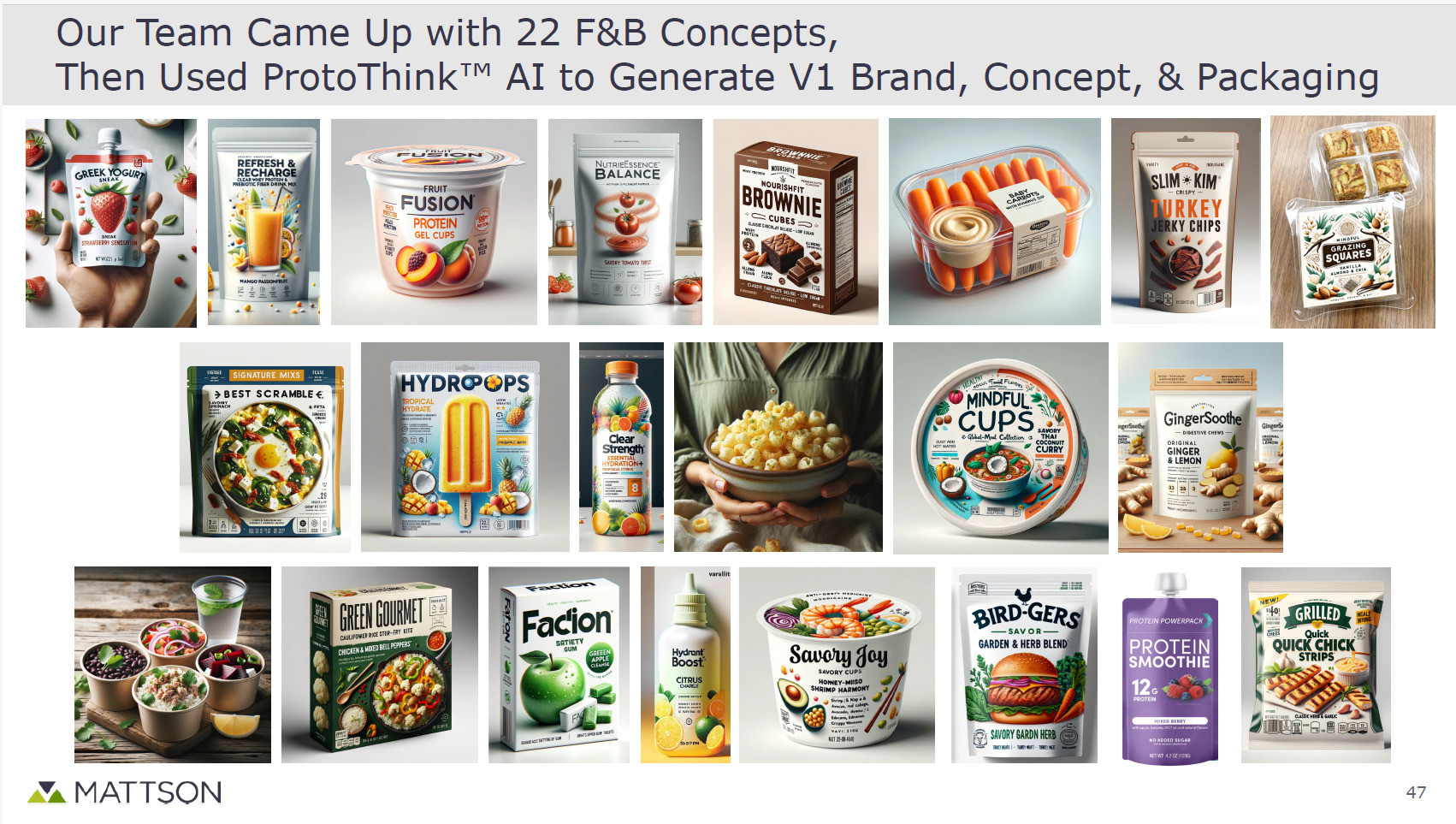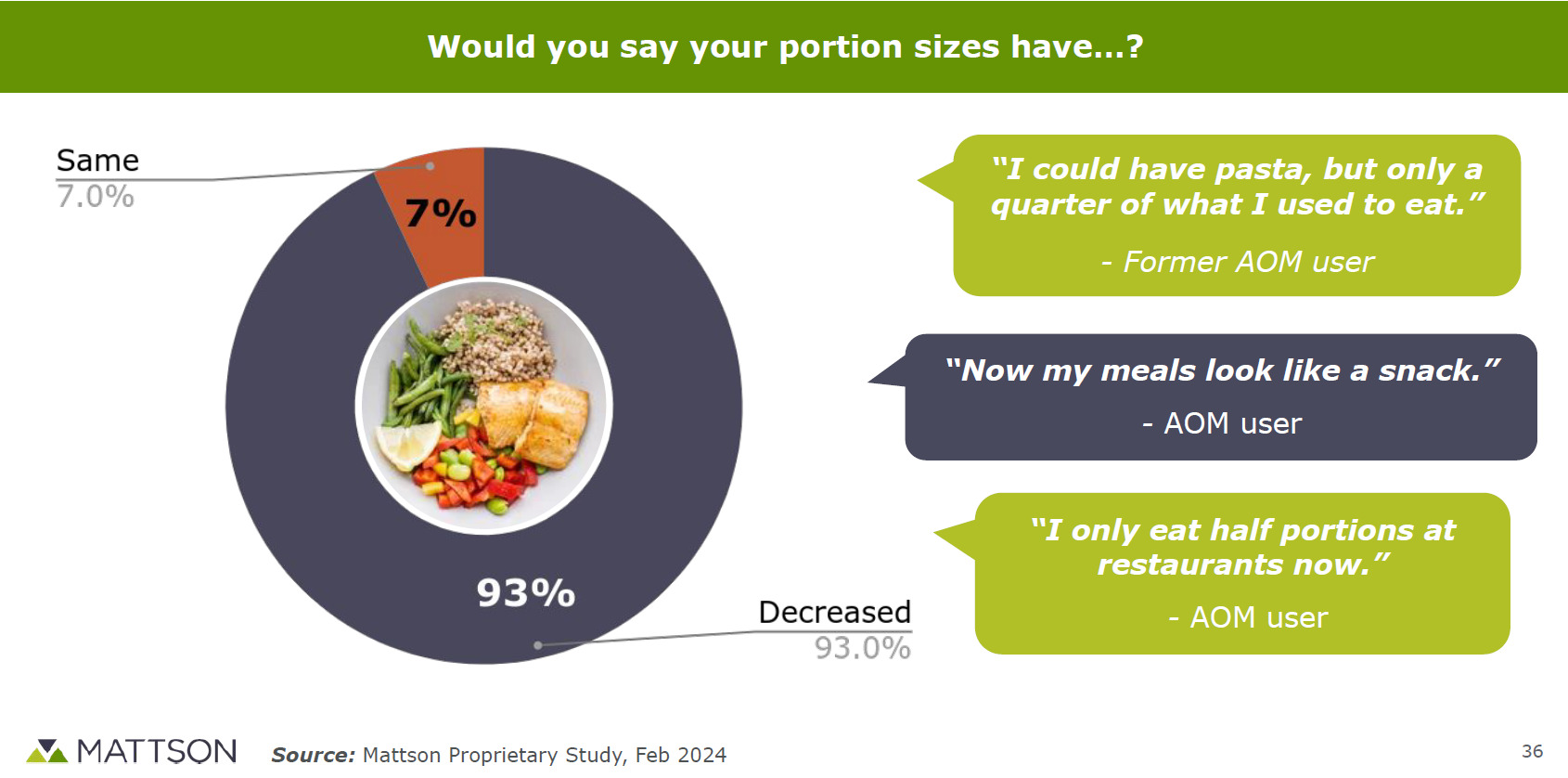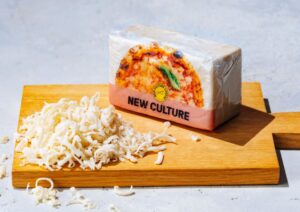We know that people taking the new wave of appetite suppressing GLP-1 drugs are eating less. But are they also making different food and lifestyle choices?
A February 2024 study of 100+ current and past AOM (anti-obesity medicine) users from product innovation specialist Mattson found that while on the AOM meds…
- 59% said they were drinking more tap or still water, 66% were drinking less soda and less alcohol, and 38% were drinking more protein beverages.
- Some said they were avoiding soda because the carbonation made them feel full or uncomfortable.
- Generally, users said they were eating more high protein foods, eggs, fruits, vegetables, and salads, grains such as rice and quinoa, and legumes; while eating fewer sweets, sugary drinks, fatty meats, carbs, processed salty foods, fried foods, alcohol, spices and dairy.
- Users reported more ‘mindful’ shopping and fewer impulse purchases, plus more focus on buying ingredients for cooking at home, less frequent shopping trips and less food waste.
- Users reported fluctuations in appetite, with many choosing to do weekly injections on a Friday, with appetite creeping up a little towards the end of the week.
- 61% spent ‘much less’ or ‘a little less’ time thinking about food.
- Users said their exercise frequency increased.
- 92% reported eating less, 61% reported eating fewer meals, and 51% ate fewer snacks.
- 93% said portion sizes had decreased.
Sharing the findings in a webinar on May 3, Jennifer Pagano, senior insights manager at Mattson, explained: “Some people did have negative side effects such as gastrointestinal issues, and some people talked about enjoying food less and not wanting to socialize around food as much or go to restaurants.
“But the bottom line was that for most of the respondents, these negatives were overshadowed by the positive benefits of these drugs. We also saw just a big increase in people feeling better about themselves and incorporating exercise and movement into their lives.”

‘Traditional diet foods are irrelevant for this consumer’
So what does all this mean for food and beverage formulators?
It’s still early days, and this is just one dataset, noted Mattson EVP insights and innovation Katie Hagan. However, the findings suggest that “traditional diet foods” are “irrelevant for this consumer,” she claimed [although Morgan Stanley research shows 44% of AOM users say they are consuming more ‘weight loss management foods’]. “New products will be needed to pair with consumers’ new healthy lifestyles.
“What we have seen throughout all of this work is that these drugs have really fundamentally changed the way people interact with food.”
Mattson chief innovation and marketing officer Barb Stuckey added: “While branded diet products (think Lean Cuisine, Atkins, Weight Watchers, Nutrisystem) can work well for the 16% of the population that achieves success with traditional weight loss through diet, exercise, and lifestyle adjustments, they may not work well for those on AOMs, since they just cannot eat as much food volume. Many of the meals and shakes are too much food to fit in a slow-emptying stomach. And they have not been developed for gastrointestinal ease and comfort. These drugs can cause nausea, diarrhea, and constipation.”
AOM users, said Hagan, are not a homogenous group, and vary between “reluctant participants” prescribed such meds by doctors to address health concerns from obesity-related conditions, to “experimenters” and “lifestyle enthusiasts” that like to explore the latest diet and exercise trends.
However, there were some consistent findings from Mattson’s panel, showing that AOM users want:
- Smaller portion sizes.
- Products that will help them hydrate.
- Products that help them increase their protein intake to address the loss of lean muscle mass.
- Foods that soothe nausea and gastric discomfort.
Dr. Moreno added: “The medications are training people to look for foods that don’t make them feel sick, and so in some ways, they are giving them guidance to have the apple instead of the fried chicken. Or to have things that are just more soothing on the stomach.”

New concepts: From hydropops to brownie cubes
Utilizing these insights, Mattson then used its proprietary ProtoThink Ai platform to generate scores of concepts, 22 of which it then tested with its AOM panel to see which ones appeared to resonate.
The most popular concepts included:
- Brownie cubes (“tiny bites of something sweet, the size of a bouillon cube”)
- Quick chick grilled chicken strips (portable pre-portioned high-protein meal or snack)
- Greek yogurt sneaks (2oz mini-portions of high-protein low-fat Greek yogurt)
- Mindful cups (freeze-dried soup mix for a hot and satisfying mini-meal)
- Hydrodrops (refreshing ‘fruit-forward’ frozen pops with fruit purees and electrolytes)

Protein needs: ‘If you lose 4lbs on these meds, that’s 3lbs of fat and 1lb of muscle’
Ensuring AOM users get enough protein is a particular challenge, said Dr. Jorge Moreno, assistant professor at Yale School of Medicine, who has been working in primary care with obesity medicine for a decade.
He told webinar delegates: “If you lose four pounds on these medications, that’s three pounds of fat and one pound of muscle. To prevent that loss [of lean muscle mass], medications are being developed so people lose fat mass and not muscle mass, but the main thing I tell patients is that they have to think more about their protein intake.”
Hagan added: “We also learned from our research that consumers found that increasing their protein consumption helped with nausea [a common side effect from GLP-1 agonists].”
As for protein, said Mattson CEO Dr. Justin Shimek, this has often been delivered via thick, satiating shakes with sweet flavor profiles such as vanilla or chocolate, whereas AOM-users may be looking for high-protein beverages that are lighter and more refreshing with different flavor profiles.
“I think [there are opportunities to develop] clearer, simpler delivery forms of protein where the beverages themselves are also hydrating and easy to consume.”
Shimek added: “I think these medications are both a risk and opportunity for the food industry, but clearly we believe that this is going to be a time of disruption. It’s not the case that brownies are going to go away altogether, but you might need to think about portion sizing and packaging for some of those beloved products that just need to be presented in a way that makes sense for these consumers.”
Hagan added: “The next big area of focus for us is restaurant menus. I think there’s an enormous opportunity here to apply [learnings from Mattson’s research] to restaurants because some of [the AOM users] felt that they had to forego the restaurant experience because there was nothing for them to eat, or certainly nothing at a value for them given their smaller portion needs.”
Pills vs injections
Looking to the future, said Dr. Moreno: “Now we have these success stories from Wegovy and Zepbound and so on, what we’re seeing in the pipeline is something like 50 different agents that are coming out that are very similar or work in similar ways [to existing GLP-1 mimics] and I think there’s going to be a lot more choice and variety.”
New delivery vehicles are also being developed as alternatives to weekly injections, Dr. Shimek added, “At the end of the day, these drugs are peptides. They’re protein based and they get digested. So that’s where a lot of the technology around the pill forms is going. How do you protect it? How do you release it? I think there’s going to be a lot of development around what’s the right delivery form.”
As foods and drugs are regulated differently, we won’t see GLP-1 mimics like semaglutide incorporated into foods any time soon, he clarified, “But I think solutions should be holistic. It’s a case of pharma plus food plus social support.”
Further reading:
🎥 Supergut shines in Ozempic era: ‘We’ve tripled the business over the past 5-6 months’



















